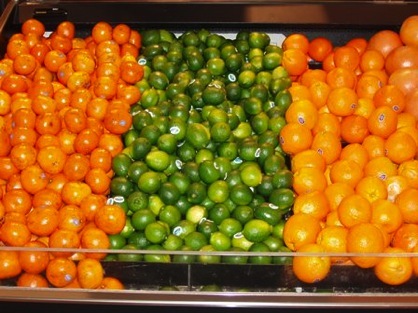Reproduction


Reproduction
Hybridization
hybrids are common in many grocery stores
(United States Department of Agriculture)
Home
Moving onto some really cool facts...
The Citrus reticulata uses its seeds to perform a form of asexual reproduction called apomixis. In one case, the egg is formed with 2n chromosomes and is able to grow without being fertilized. In other cases, the ovule cells (2n) are able to grow into an embryo. Apomixis may include both embryo development and egg fertilization.
Malaise de L’Orange (YouTube)
*please note this is not how mandarin oranges reproduce
It is not a self-pollinating plant, thus requires its mutualistic relationship with insects and animals for pollination. As insects, such as honey bees, rub up against the inside of the flower to get the nectar, they also pick up the pollen. As they go from flower to flower and tree to tree retrieving nectar, they pollinate the flowers to create cross-fertilization.
Like all other angiosperms, the reproduction of Citrus reticulata has the alternation of generations. This is a very complex life-cycle. The Citrus reticulata tree is hermaphroditic, containing both male and female organs. Therefore, when the insects go from flower to flower pollinating, the ovule, the female part of the flower containing the egg, must be pollinated by the male part of the flower containing sperm, called pollen. This fertilization allows for the creation of a seed.

